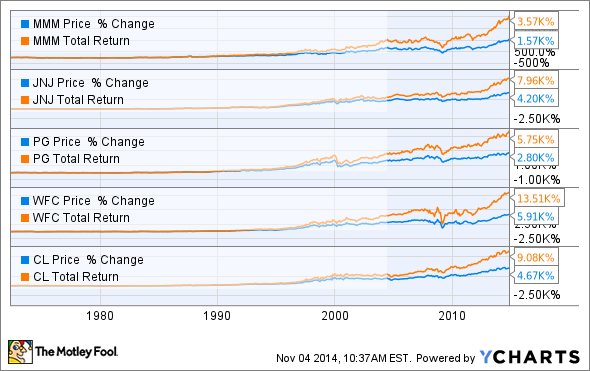5 Common Misconceptions When Investing in Dividends
Post on: 2 Апрель, 2015 No Comment

Essentially, dividend investing is simply the process of investing in companies that pay out distributions and regularly reinvesting those distributions or dividends in order to accumulate wealth over time. Sounds simple, doesn’t it? Unfortunately, as is the case with penny stocks and most aspects of investing, coming up with a seemingly sound investing strategy is one thing, but implementing it is another beast altogether.
Dividend investors need to consider a variety of factors when choosing which dividend stocks to trust with their investment dollars. In addition to learning how to spot prime stocks, it’s equally important for dividend investors to know how to avoid the bad ones that look great but have shaky foundations. Let’s explore the topic of dividend investing further by discussing five common misconceptions when investing in dividends.
1. Dividend Investing Requires Significant Capital
Most investors assume dividend investing requires a substantial amount of capital in order to generate a sufficient income. While large sums like $1,000,000 are routinely thrown around as the required capital for dividend investing, nothing could be further from the truth. In fact, an ordinary investor can begin dividend investing with as little as a few hundred dollars and reinvest the dividends to keep adding to their position.
That being said, the more money you have to invest, the faster you’ll be able to reach your monthly income goal. However, due to the stable nature of dividend income, it’s more than possible to start out with a limited nest egg and accumulate a large enough portfolio to enjoy a healthy monthly income.
2. Dividend Investing is the Same as Value Investing
At face value, this is a well-founded common misconception. However, while value investors try to identify discounted stocks in order to “buy low and sell high,” dividend investors are more interested in companies that are trading low in comparison to their dividends. Dividend investors are still attracted to stocks that are trading at a discount in comparison to their intrinsic value, but they’re more concerned with identifying companies with sustainable cash flow and high yields
3. Dividends are for Retirement-Focused Investors
Another common misconception pertaining to dividend investing is that it’s designed for older investors. Although older investors are naturally inclined to focus on companies with solid yields and regular dividend payments, dividend stocks are wonderful for investors of all ages. Anyone interested in building wealth over time with gradually increased dividends and earnings should consider dividend investing, regardless of their age.
4. You Can’t Go Wrong with a High Yield
The yield of a dividend is calculated by dividing the dividend per share by the price per share, so the higher a stock’s price per share, the lower its dividend yield will be. Therefore, a high yield is typically associated with a rapidly declining stock price, which should raise warning flags. Rather than assuming a high yield is a good thing, dividend investors should determine the underlying factors as to why a stock has a particular yield prior to making an investment decision.
5. Dividend Stocks are the Safest Stocks Around
This statement may be true more times than not, but there have been plenty of dividend investors who have lost their shirts over the years by paying more attention to the dividend yield of companies than their actual fiscal health. The last recession alone spelled the near collapse of several established dividend-paying companies with consistently high yields and what proved to be shaky foundations.
The stock market thrives on volatility, but the key to becoming a successful dividend investor is to perform your due diligence and choose a stable company with a long history of consistently increasing its dividend payments. A high dividend payout ratio, however, may be a warning sign of underlying fundamental issues. In the end, the more you know about a stock prior to investing in it, the better off you’ll be.














